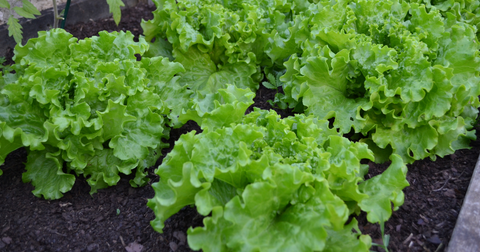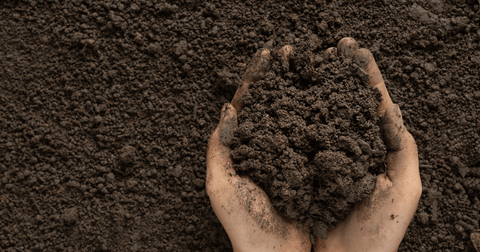As winter bids farewell and the sun warms the earth, it's time to dive into the joy of cultivating your own garden haven. Ready to grow your veggies but not sure where to start? Welcome to the enchanting world of spring gardening! We're here to guide you through the simplicity of easy-to-grow vegetables that will turn your garden dreams into reality.
To make your garden flourish, you'll need to understand the basic gardening steps for each veggie to thrive. The steps to a successful spring garden involve mastering the basics of planning, planting, and nurturing through out the growing season. It's a simple dance of sunlight, water, and care that turns your backyard into a haven of homegrown delights.
So, join us on a journey through steps that will make your home garden a celebration of nature's bounty. Your spring garden adventure is about to begin!
20 Easy-to-Grow Vegetables to Plant in Early Spring Planting
1. Mustard Greens
Mustard greens are a versatile and quick-growing leafy vegetable with a spicy kick. Perfect for spring, they add a zesty flavor to salads or stir-fries. Plant them in well-drained soil, and you'll harvest nutrient-packed greens in just a few weeks.

2. Beets
Beets are delicious and incredibly easy to grow in the spring. Their vibrant colors—red, golden, or Chioggia—brighten up your garden. Before you sow the beet seeds directly in the soil soak them in warm water to soften the shells before sowing. Thin them for proper spacing when they grow, and enjoy tender, earthy-flavored roots.
3. Swiss Chard
With its colorful stems and glossy leaves, Swiss chard is a nutritious addition to any garden. It thrives in cooler temperatures, making it an ideal spring vegetable. Harvest the outer leaves for a continuous supply, and enjoy its mild, spinach-like taste.

4. Tomatoes
Tomatoes are a garden favorite, and spring is the perfect time to start them from seeds or transplants. From sweet cherry tomatoes to robust beefsteaks, they offer a variety of flavors. Provide support as they grow, and you'll be rewarded with juicy, sun-ripened fruits.
5. Lettuce
Lettuce is a staple for salads; growing it in early spring ensures a crisp and flavorful harvest. Choose from various types like romaine, butterhead, or looseleaf. Start indoors in a fine texture seed-starting mix in a seed tray or flats. Keep it consistently moist, and enjoy the satisfaction of homegrown salads.

6. Zucchini
Zucchini is a prolific and easy-to-grow summer squash. With its rapid growth, it's a rewarding addition to a spring garden. Space the plants for good air circulation, and harvest when they are small for the best flavor and texture.
7. Cucumbers
Cucumbers thrive in the warm spring and summer weather. Whether you're growing slicing or pickling varieties, support climbing types and ensure consistent moisture. Homegrown cucumbers are crisp, refreshing, and perfect for salads or snacks.
8. Radishes
Radishes are one of the fastest-growing vegetables, making them perfect for impatient gardeners. Sow them directly in the soil, and you'll have crunchy, peppery roots in a few weeks. Harvest when young for the best taste and texture.

9. Carrots
Carrots are a classic root vegetable easy to grow in the spring. Plant in loose, well-drained soil, and thin seedlings for proper spacing. Enjoy sweet, crunchy carrots from your garden as a healthy snack or dish addition.
10. Spinach
Spinach is a cool-season green that thrives in the spring. Rich in nutrients, it's a versatile addition to salads, smoothies, or cooked dishes. Plant in fertile soil, and you'll have a consistent supply of fresh, tender leaves.

11. Bell Peppers
Bell peppers come in various colors and add sweetness to your garden. Plant them in full sun, use well-drained soil, and stake if necessary to support their heavy fruiting. Enjoy the vibrant and flavorful peppers in salads, stir-fries, or as crunchy snacks.
12. Bush Beans
Bush beans are a hassle-free addition to a spring garden. Direct sow them on your garden bed after the last frost date. These beans offer a quick and abundant harvest, perfect for fresh eating or preserving.

13. Peas
Peas are cool-season crops that thrive in spring. Direct sow peas whether you choose snap, shelling or snow peas. Support climbing varieties and enjoy the sweet, tender pods straight from the garden.
14. Broccoli
Broccoli, a nutritious cruciferous vegetable, does well when planted in the spring. Plant in fertile soil, and harvest the heads before the flowers open. Broccoli is not only healthy but also a flavorful addition to various dishes.
15. Cabbage
Cabbage, with its tightly packed leaves, is a robust spring vegetable. Please protect it from cabbage worms, and enjoy the versatile leaves in coleslaw, stir-fries, or as wraps.

16. Cauliflower
Cauliflower, a close relative to broccoli, is another excellent choice for a spring garden. Blanch the heads by tying the leaves together when they start forming, and enjoy the mild, nutty flavor of homegrown cauliflower.
17. Kale
Kale is a cold-tolerant green that's easy to grow in the spring and all summer long. With its rich nutrient profile, it's a valuable addition to salads, smoothies, or sautés. Harvest the leaves regularly for a continuous supply.
18. Arugula
Arugula, a fast-growing salad green with a peppery taste, thrives in cooler temperatures. Sow directly in the soil, and you'll have a flavorful addition to salads, sandwiches, or as a pizza topping.

19. Spring Onions
Spring onions are a kitchen staple and are relatively easy to grow in the spring. Plant in well-draining soil, provide consistent moisture, and enjoy the pungent bulbs in various culinary creations.
20. Herbs
Herbs like basil, mint, and parsley are flavorful and easy to grow. Plant them in well-drained soil, and you'll have fresh herbs for cooking, garnishing, or making refreshing teas. Regular harvesting promotes bushiness and enhances their flavors.

Starting Your Spring Vegetable Garden
Now that we've explored these fantastic 20 veggies to plant in spring let's delve into the basics of starting your garden.
Step 1: Planning Your Spring Vegetable Garden
Before you dive into the joys of spring planting, take a moment to plan your garden. Consider the layout, sunlight, and the best vegetables you want to grow. Do not forget to consider the cold weather or the last frost date as they might kill your plants.
Group plants with similar water and sunlight needs together to optimize their growth. Make a list of the veggies you love and ensure they're suitable for the upcoming season. Planning your vegetable garden ahead sets the stage for a thriving garden.
Step 2: Choosing the Right Location
Selecting the right location is paramount for a successful garden. Most vegetables require at least 6-8 hours of sunlight, so choose a sunny spot. Ensure the garden soil is well-draining and nutrient-rich. Avoid areas with poor drainage, as waterlogged roots can lead to plant diseases. A sunny, well-drained location sets the foundation for robust and healthy plants.
Step 3: Preparing the Soil
Now that you've chosen the perfect spot, it's time to prepare the garden beds. Loosen the soil with a garden fork or tiller to improve aeration and root penetration. Incorporate organic matter such as compost, or Natures Perfect Organic Soil Enhancer to enhance soil's fertility. A nutrient-rich soil provides plants with the essential elements they need to thrive. Take the time to cultivate a welcoming environment for your future vegetables.

Step 4: Choosing the Right Vegetables
Selecting the right spring vegetables is crucial for a bountiful harvest. Consider the climate and frost dates in your region when choosing your spring vegetables. Cool-season crops like lettuce, spinach, and peas thrive in the spring. Consult local gardening resources or nurseries to identify the best varieties for your area. A well-thought-out selection ensures a diverse and delicious harvest.
Step 5: Sowing Seeds
Choose the right seeds to plant in spring. Some can be directly sown or can be started using seed trays or any seeding medium. Get a head start on your spring garden by starting seeds indoors. Use seed trays or small pots filled with a quality seed-starting mix when you plant seeds. Follow the instructions on seed packet for proper depth and spacing. Provide adequate light and maintain optimal temperature and humidity levels. Starting seeds indoors allows you to control the early stages of plant development, giving your garden a jumpstart.
To sow seeds directly in the ground, draw furrows into the soil surface where you want to sow your seed, then drop seeds into the furrow at the appropriate spacing. Refer to your seed packet for information on seed spacing and depth. You can start planting cold hardy vegetable varieties that can be planted early in cool weather. You don't have to worry about the outdoor conditions when you plant these in colder climates.

Step 6: Transplanting Seedlings
Once your seedlings have developed sturdy roots and true leaves, it's time to transplant them into the garden. Choose a mild, overcast day for transplanting to minimize stress on the plants. Dig a hole slightly larger than the root ball of each seedling and gently place them in the soil. Water thoroughly to help them settle in. Proper transplanting ensures a smooth transition from indoor to outdoor life.
Step 7: Watering
Water regularly especially during dry periods, but do not over water to avoid root rot. Aim for the base of the plants to keep foliage dry and prevent diseases. Watering contributes to your spring veggie garden's overall health and productivity. Use gardeners hose, drip irrigation or watering can depending on the size of your garden.
Step 8: Mulching and Fertilizing
Mulching and fertilizing are pivotal steps in cultivating successful gardens. For thriving garden beds throughout the summer, most gardeners prioritize these practices. Applying a generous layer of organic mulch, such as straw or compost, conservates soil moisture, suppresses weeds, and regulates soil temperature. This, coupled with timely fertilization, ensures robust plant growth.
Choosing a balanced, slow-release fertilizer provides essential nutrients and sustaining the needs of various plants. You can start to fertilize three weeks after planting. From the delicate leaves of lettuce to the sturdy stems of tomatoes, this combined approach guarantees a nourished and flourishing garden, creating a foundation for a vibrant and productive growing season.

Step 9: Monitoring and Pest Control
Regular monitoring is essential to catch any issues early on. Keep an eye out for signs of pests or diseases. Implement natural pest control methods, such as companion planting or introducing beneficial insects, to maintain a healthy balance in your garden. Timely intervention ensures your vegetables grow without unnecessary setbacks.
Step 10: Harvesting and Enjoying Your Bounty
The moment you've been patiently waiting for – harvesting! Pay attention to the specific harvesting times for each vegetable in your garden. Use clean, sharp tools to harvest and gather your produce at its peak ripeness. Enjoy the fruits (and vegetables) of your labor in the form of fresh, homegrown goodness. Share your bounty with friends and family, and revel in the satisfaction of a successful spring veggie gardens.

Conclusion:
In conclusion, transforming your garden with the best vegetable plants for spring is a gratifying journey that promises a bounty of fresh, flavorful produce. From early bloomers to gourmet choices, the variety of vegetables allows you to tailor your garden to your tastes and preferences. Embrace sustainable practices, experiment with companion planting, and revel in the joy of nurturing a thriving spring garden. Let your garden be a testament to the beauty of nature and the fulfillment of a green thumb's aspirations.
Whether you're a seasoned gardener or a beginner with a green thumb in the making, we invite you to share your spring gardening journey with us in the comment section. Your garden story might inspire others to join the wonderful world of home gardening.
Get Growing Now! Happy gardening!





Share and get 15% off!
Simply share this product on one of the following social networks and you will unlock 15% off!